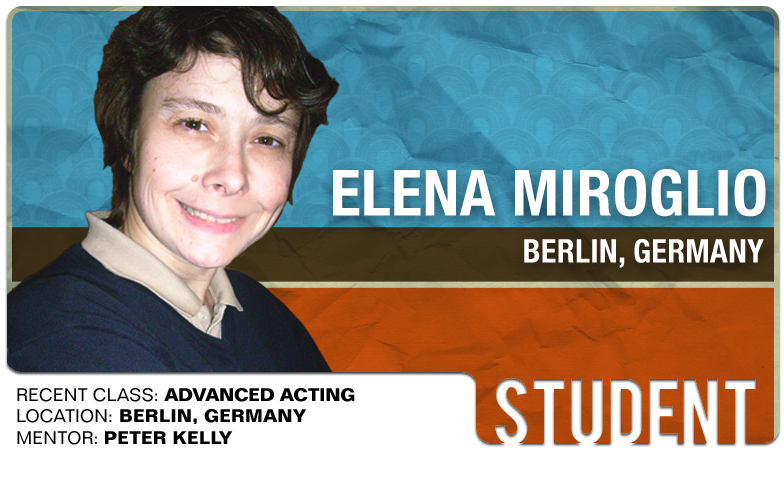Animator's Journey: A Pianist Pursues Her Dream of Animation
Ever since I can remember, I have always wanted to be an animator. I didn't know that was the name of my dream job, but I knew that it was what I wanted to do.
But it took a long time to get there.
When I was a kid, my mother wanted me to be a piano player, and she started me in that direction when I was 5 years old. I grew up practicing piano many, many hours a day, and became quite successful in my music career. At age 19, I got a bachelor's degree in piano at the Academy of Music, and I found the courage to say that I wanted to work in animation.
The Animation Journey Begins
The animation profession was at its lowest point in Italy at that time; the only animation produced were a few commercials here and there. There were no schools or legitimate studios training young people, just a few established professional artists working from their homes who were not specializing, but doing whatever was needed (animation, storyboard, layout, etc.).
I heard about one of these artists, who was working not far from my hometown, Cuneo, and I contacted him. He was depressed about the situation and tried to talk me out of it, but I was so eager to learn that in the end, he agreed to help me practice secondary phases of the job ("in-betweening") on his old drawings. I continued like this for more than a year, working during the day and practicing in-betweens at night.
Then, a feature film (the first big production in Italy in 20 years) began production: Freccia Azzurra (The Blue Arrow). My friend brought me aboard at Lanterna Magica, a studio in Turin.
I was not there as an animator (there were no real animators at the studio), but I was craving animating so much that the director let me try to animate here and there. I was happy because I was handling animation drawings from all over Europe. Some of the drawings were from a very talented animator (who shortly thereafter left for Disney Australia), and I learned a lot from studying his drawings. Furthermore, he gave me a long list of books to study from.
After Freccia Azzurra was released, it once again became a very hard time for animation. I continued working in the field (TV series and commercials) in spite of the harshness. However, compensation was based on footage, and the pay was so low that only the most experienced animators had become fast enough to earn a living. I was just a beginner, so I had to work a lot of extra hours to make ends meet. I was working 10-12 hours a day (even on weekends!). At night, I was studying REAL animation from the books my friend at Disney recommended. It was really difficult, but I had so much enthusiasm and passion that I persevered.
After years of struggling, I landed firmly in the field of feature films.
I have now been working in the field for 14 years (as an animator, animator supervisor, and animation director), and I'm still in love with animation as much as I was the first day.
I come from traditional animation - I got all my tough training on drawings, anatomy and such, and I'm totally self-taught, both on drawings and animation. But when it came to computer graphics (CG), I didn't want to face the struggle of self-teaching again – so I've come to Animation Mentor.
Animation Mentor Connects You to the World of Animation
Animation Mentor is not just the best animation school you can find. For me, it has been a dream connection to the world of animation as I like it, the world of animation at its highest standard; a world where animation is real acting, where people like to do their best at it. Unfortunately, in this profession it's not always like that – at least in Europe. Very often, directors and supervisors don't encourage you to give real thoughts or feelings to the characters, or to think about your shot as an acting performance, much less help you in that regard.
For me, acting is what has always attracted me to animation. I love to play the emotions. I like the Artaudian definition of an actor as an "athlete of emotions." In this regard, I definitely feel that I'm an actor, only I don't use my body to express the emotions.
Expressing the Art Inside You
During my years of training, I sometimes met people with an innate ability for the basic principles - people who can get an immediate fluidity in their animations. In the beginning, I thought that was the only true sign of authentic talent, but with time and experience I came to understand that talent can express itself in many ways.
An inspirational and heart-warming figure for me is composer Richard Wagner: Wagner, as Lee Strasberg often pointed out to his acting students, struggled a lot on his music. If you visit the Wagner Museum in Bayreuth, Germany and view his manuscripts, you'll be amazed to see how many corrections he made, erasing and re-writing until he found the perfect notes for his music.
There are many different ways to be an artist. The most important thing to remember is to not be discouraged if we have to struggle a little (or a lot) to get our results.

